The Enemy of Average! Wild Surfwear- USA Made / Christian Franzen
Add some descriptive text to your Blog page.
Posted on March 09 2016

By Christian Franzen
Carlo Crivelli was born in 1431 in Venice, Italy. His father was an amateur painter and taught him how to paint at a young age. As a young man he attended the Vivarini School of Painting in Venice where he studied for a brief period before leaving for Padua. There he worked with a group of artists under Francesco Squarcione. By 1457, he had gained enough recognition to acquire commissions on his own. However, his new found success was short-lived. Later that same year he was given a six month prison sentence in Padua for having an affair with a married woman. Once he was out of jail he was socially exiled within the community and decided to leave. He ended up in Dalmatia, which is now part of Croatia, a Venetian colony.

By Christian Franzen
Carlo Crivelli was born in 1431 in Venice, Italy. His father was an amateur painter and taught him how to paint at a young age. As a young man he attended the Vivarini School of Painting in Venice where he studied for a brief period before leaving for Padua. There he worked with a group of artists under Francesco Squarcione. By 1457, he had gained enough recognition to acquire commissions on his own. However, his new found success was short-lived. Later that same year he was given a six month prison sentence in Padua for having an affair with a married woman. Once he was out of jail he was socially exiled within the community and decided to leave. He ended up in Dalmatia, which is now part of Croatia, a Venetian colony.
In his paintings, Crivelli did not adopt the new Renaissance style but rather he painted in the older Gothic Style. In addition he only painted in egg tempura despite the popularity of oil paints in Italy. Crivelli's paintings are always jam packed with ornate gold inlays and lavish depictions of biblical narratives. Due to his stylistic qualities, Crivelli was only able to secure steady patrons among the church. He predominately worked for Fransiscan monasteries in the North Italian area. Crivelli died In March of 1495 in Ascoli Pinceno, Italy. During his lifetime his work was rather popular among church establishments but fell out of favor after his death with the continual evolution of the Florentine style of Renaissance Painting.
Posted on March 02 2016

By Christian Franzen
Jacopo Bassano was born in Bassano del Grappa, Italy in the year 1510. Growing up in northern Italy he was exposed to and practiced Renaissance painting in the Venetian style, which differed slightly from the style of southern Italy. He was the student of the Venetian master Veronese. During his years as an apprentice he developed a love for depicting landscape that would stay with him and characterize much of his work.

By Christian Franzen
Jacopo Bassano was born in Bassano del Grappa, Italy in the year 1510. Growing up in northern Italy he was exposed to and practiced Renaissance painting in the Venetian style, which differed slightly from the style of southern Italy. He was the student of the Venetian master Veronese. During his years as an apprentice he developed a love for depicting landscape that would stay with him and characterize much of his work.
After completing his apprenticeship, Bassano opened an artists studio in the early 1530's in his home town that specialized in creating religious genre painting for the surrounding church establishments. In his early years of a practicing artist, Bassano was heavily influenced by the painter Titian. Looking at Titian's work encouraged Bassano to charge his paintings full of color pops. Interestingly, in many of Bassano's compositions during this time he places the figure of Christ deeper within the painting rather than directly in front like most all other painters of this time.
In Bassano's work, The Last Supper which was completed in 1542 you can see the artists new interest in style of Mannerism. This new interest in Mannerism launches Bassano into a whole new level within his paintings. His once more stagnant figure compositions transformed into supercharged high drama/movement paintings. This new energy paired with his intense color pops set Bassano on another level as an artist, leaps above many of his contemporaries.
Towards the end of his life Bassano began to experiment with extreme lighting within his compositions. This eventually led to him beginning to paint outside at night to get a wide variety of darks. These paintings began to get more painterly as he progressed into them; leaving a lot of the technical tightness of his early works behind. This change to an emphasis on nature lead to him abandoning painting religious figures within enclosed spaces. Bassano transitioned into painting figures in an outdoor setting under his extreme lighting scenarios. The artist died on February 14th 1592 in his town of Bassano del Grappa
Posted on February 23 2016

By Christian Franzen
Nicolaes Maes was born in January of 1638 into the golden age of Dutch painting. Maes was born into a wealthy family, and when he was of apprenticeship (around 1628) age he was sent to study with Rembrandt in Amsterdam. While studying with Rembrandt, Maes became a master at the drastic lighting which characterized his masters work. At the end of his apprenticeship his work so closely mimicked Rembrandt's that Maes actually signed his works under his teachers name and nobody could tell the difference.

By Christian Franzen
Nicolaes Maes was born in January of 1638 into the golden age of Dutch painting. Maes was born into a wealthy family, and when he was of apprenticeship (around 1628) age he was sent to study with Rembrandt in Amsterdam. While studying with Rembrandt, Maes became a master at the drastic lighting which characterized his masters work. At the end of his apprenticeship his work so closely mimicked Rembrandt's that Maes actually signed his works under his teachers name and nobody could tell the difference.
The year 1655 marked the beginning of Maes's golden years as an artist. He became primarily a portrait painter and preferably painted women engaging in house hold tasks such as cooking and particularly lace making, which was his favorite activity to paint. In these years Maes perfected and improved upon his techniques taught to him by Rembrandt so it is hard to tell the two apart in works done in this period. Adding to the confusion is the fact that Maes was known to not sign all of his paintings, leaving it somewhat ambiguous at times as to who's work was in front of you.
In 1665 he moved to Antwerp where he then lived for three years. His move to Antwerp resulted in a complete shift in style, composition, and subject matter. Abandoning his high contrast style which he had obtained form studying with Rembrandt, in Antwerp he began working on larger scale portraiture with lower light contrast and more complex composition. The new style in this work is closely related to the works of Van Eyck. Towards the end of his life Maes moved back to Amsterdam. There he continued painting until his death in November of 1693. Today, many of his most notable works can be found in the London National Gallery.
Posted on February 10 2016

By Christian Franzen
Andrea del Sarto was born in Florence July 16th in 1486. He was sent into an apprenticeship at the young age of 12 because if his noticeable artistic talents. Gian Barlie, semi notable woodcarver and painter, was his first teacher. Del Sarto studied with him for four years until he was apprentice snatched by the highly acclaimed painter of the mid Renaissance Piero di Cosimo.
The King of France ,François I, invited Del Sarto to visit France and receive employment from the King's court. However, after spending little time in France the artists wanted to return to Italy. Del Sarto tricked the King into paying him a sum of money to secure his loyalty and to return to France after a short visit to Italy. Instead of returning to France, Del Sarto used the Kings money to buy a large house in Florence upon his return home.

By Christian Franzen
Andrea del Sarto was born in Florence July 16th in 1486. He was sent into an apprenticeship at the young age of 12 because if his noticeable artistic talents. Gian Barlie, semi notable woodcarver and painter, was his first teacher. Del Sarto studied with him for four years until he was apprentice snatched by the highly acclaimed painter of the mid Renaissance Piero di Cosimo.
After his training was complete he opened a joint studio with friend Franciabigio in Florence. Del Sarto began to blossom in his first large commission of a monochrome fresco series in the Compagna dello Scalzo in Florence. With the completion of this fresco, Del Sarto earned a stand out reputation among the painters of Florence for his ability of capturing natural poses and emotive expressions.
In 1509, the Brotherhood of the Servites hired Del Sarto to complete a series of frescos in the Basilica della Santissima Annunziata of Florence. This series depicted the live of Filippo Benizzi. Upon completion the frescos were met with much admiration and as a result the Brotherhood employed him for the next five years to create five more frescos.
The King of France ,François I, invited Del Sarto to visit France and receive employment from the King's court. However, after spending little time in France the artists wanted to return to Italy. Del Sarto tricked the King into paying him a sum of money to secure his loyalty and to return to France after a short visit to Italy. Instead of returning to France, Del Sarto used the Kings money to buy a large house in Florence upon his return home.
Now back in Florence and more popular than ever, Del Sarto was in high demand for commissions. He began taking commissions all over Florence painting sections of many famous chapels and basilicas throughout the city. This period between 1520 and 1527 legitimized Del Sarto as a iconic master of the late Renaissance and a leader into the new age of mannerism. In 1527 he began his final painting at the Chapel San Salvia. Over the years this painting has gotten a large amount of attention because all the figures in the work appear to be self portraits of Del Sarto himself. Del Sarto actually painted many self portraits over his career as an artist but alway masked them into larger works or gave the works misleading names. In his final years he served as a brief mentor to the great florentine painter Pontormo. Andrea del Sarto died in September of 1530 at the age of forty-four.
Posted on February 09 2016












 (Photos Thomas Green)
(Photos Thomas Green)
We are so proud to release Mowgli's best season to date Spring 2016!!!! Thank you to everyone who supports us and appreciates what we do!!! We sincerely hope you love the new line as mush we do!!












 (Photos Thomas Green)
(Photos Thomas Green)We are so proud to release Mowgli's best season to date Spring 2016!!!! Thank you to everyone who supports us and appreciates what we do!!! We sincerely hope you love the new line as mush we do!!
Posted on January 26 2016

By Christian Franzen
Cândido Portinari was born in São Paulo, Brazil in December of 1903. His mother and father had immigrated from Veneto, Italy several years before their son was born. He studied art at the Escola Nacional de Belas Artes (ENBA) in Rio de Janeiro. In 1928, Portinari was awarded a study abroad opportunity from the ENBA which enabled him to travel to Paris.

By Christian Franzen
Cândido Portinari was born in São Paulo, Brazil in December of 1903. His mother and father had immigrated from Veneto, Italy several years before their son was born. He studied art at the Escola Nacional de Belas Artes (ENBA) in Rio de Janeiro. In 1928, Portinari was awarded a study abroad opportunity from the ENBA which enabled him to travel to Paris.
Portinari lived and studied in Paris for two years until returning home to Brazil in 1930. Once back in Brazil he became an active member in the emerging communist party. In 1947 he ran for Senator, but was forced to leave Brazil because of the persecution of Communists that was beginning to take affect in the Brazilian Government. He was able to safely return to Brazil in 1951, but was confronted with serious personal health problems. Portinari died in Rio de Janeiro in 1962 from lead poisoning which he had contracted from his paints.
Portinari became one of the most well known Latin American painters through his rigorous work ethic and the tremendous amount of work he was able to create in his lifetime. He is associated with being an influential character in the neo-realism movement that took place throughout Latin America. His work can be seen in museums and galleries all over the world. Here in the USA Portinari has pieces in the United Nations building in New York and Library of Congress in Washington DC!
Posted on January 19 2016

By Christian Franzen
Michael Kabotie was born on September 3rd 1942 in the small village of Shongopovi on the Hopi Reservation located in Arizona. The son of famous artist Fred Kabotie, Michael was surrounded by art since he was born. While growing up, his father taught him techniques in painting as well as Hopi Silversmithing.

By Christian Franzen
Michael Kabotie was born on September 3rd 1942 in the small village of Shongopovi on the Hopi Reservation located in Arizona. The son of famous artist Fred Kabotie, Michael was surrounded by art since he was born. While growing up, his father taught him techniques in painting as well as Hopi Silversmithing.
In high school, Kabotie dove fully into painting enrolling in as many art classes as he could. Since he had already been painting for several years under instruction of his father, Kabotie was a major stand out and recognized for his artistic talents. After completing high school he went onto attend the Haskell Indian School in Lawrence, Kansas. During his junior year at the university he was asked to assist on a Southwest Indian Art Project at the University of Arizona. He then attended the University of Arizona for a brief amount of time.
With the completion of the Southwest Indian Art Project, Kabotie gained some exposure and was asked to host a show of his own. He was gifted a one man show at the Heard Museum in Phoenix, Arizona which turned out to be a large success. Having had such a successful show, Katobie dropped out of college and continued to pursue the path of an artist on his own terms.
In 1972-73 he was a key figure in the formation an artist group known as Artist Hopid. This new group dedicated themselves to interpreting traditional Hopi art forms and transitioning them into contemporary works.
Both Kabotie's painting and metal work take a lot from Hopi history and traditions of art making. His works can be characterized by his use of bold color, symbols, and dynamic motion. Sadly, Kabotie died in 2009 at the age of 67 from the Swine Flu at his home in Arizona.
Posted on January 12 2016

By Christian Franzen
Chéri Samba was born on December 30th 1956 in the Democratic Republic of Congo. He was one of ten children supported by their fathers work as a blacksmith in a small village outside of the capital Kinshasa. Being one out of ten children in a poor family, Samba took pleasure in drawing on what paper he could find.

By Christian Franzen
Chéri Samba was born on December 30th 1956 in the Democratic Republic of Congo. He was one of ten children supported by their fathers work as a blacksmith in a small village outside of the capital Kinshasa. Being one out of ten children in a poor family, Samba took pleasure in drawing on what paper he could find.
When he was only 16 he left his small village for the big capital city of Kinshasa. There he found a job as a sign painter. Working in city he became acquainted with several other artists whom shared common interests. These artists came together to form a new school of African American artists and are now regarded as on of the most vibrant schools in the global contemporary painting scene.
Samba opened his own private studio in 1975. That same year he began work for an entertainment magazine Bilenge Info. For Bilenge he painted billboards in addition to creating comic strips for the magazine. This background in print and advertisement can be seen in his paintings. In most of Samba's paintings he utilizes the power text which, in addition to to his use of stylized figures set in spaces shaped by large color blocks to create a narrative feel.
He received fame around the city for his work, but his big break through came when he was given the opportunity to exhibit at the Pompidou in Paris in 1989. This exhibit made him internationally recognized and ushered him into a new level of success. In 2007, he was given the opportunity to show at the Venice Biennale, which he of course accepted. Samba is still alive and painting today. He lives in Kinshasa most of the year where he can be found pushing the boundaries of contemporary painting.
Posted on January 06 2016

By Christian Franzen
Jacob Lawrence was born on September 7th 1917 in Atlantic City, New Jersey. In 1930, Lawrence and his family moved to New York City and settled in Harlem. Throughout his teenage years his mother enrolled him in numerous art courses exposing him to art at a young age. It was quickly seen by his teacher that he was naturally creative. However, Lawrence dropped out of school all together at the age of 16.

By Christian Franzen
Jacob Lawrence was born on September 7th 1917 in Atlantic City, New Jersey. In 1930, Lawrence and his family moved to New York City and settled in Harlem. Throughout his teenage years his mother enrolled him in numerous art courses exposing him to art at a young age. It was quickly seen by his teacher that he was naturally creative. However, Lawrence dropped out of school all together at the age of 16.
When he was 19 he enrolled in the Harlem Art Workshop, where he studied art under artist Charles Alston. After completing the Workshop courses he began studying at the Harlem Community Art Center. Studying at the Community Art Center he became very close to the head professor, Augusta Savage. It was Savage who later got Lawrence a scholarship to the American Artists school and a position working for the Work Progress Administration. While working in the WPA he befriended several other New York artists whom he stayed friends with and later taught with in Art Workshops.
In 1943, Lawrence enlisted in the United Stated Coast Guard. He served on the first racially integrated crew. While working in the coast guard he continued to find time to paint. In 1970, Lawrence was invited to teach at the University of Washington. He accepted and moved to Seattle where he lived until his death in 2000.
Throughout his work he focused on the history and struggles of the African American peoples. His paintings can be distinguished by their bold shape and color inspired by Lawrence's Life in Harlem. Lawrence is one of the most influential painters to emerge out of the Harlem Renaissance and is still an inspiration to young artists today.
Posted on December 29 2015

By Christian Franzen
Elmer Bischoff was born July 8th 1916 in Berkley, California. Growing up in Berkley he was exposed to the artistic community at a young age. Bischoff went on to attend the University California Berkley in 1934 where he completed his BFA and then went on to receive his MFA from Berkley as well. Right after completing his masters program he was offered a teaching position at Sacramento High School, which he took. However, his new job as a teacher was short lived as he was drafted into military service in 1941.
During the war he was stationed in England, where he served in the intelligence services. He returned to the US in 1945 and found himself back in San Francisco. Returning to the art scene he was older than the emerging avant-garde scene in the bay area and wasn't sure what to make of himself for a short period. One day in January of 1946 he was visited by friend and fellow artist, Karl Kasten. Kasten was looking for someone to fill an opening in the faculty at California School of Fine Arts and Bischoff was his man. By this act of God the stars aligned and Bischoff befriended fellow post-war Artists David Park and Richard Diebenkorn, whom were also faculty at the School of Fine Arts. The three became fast friends held one an others opinion in high regard. The three also often participated in life model sessions with each other despite their abstract paint style.
Beginning in the early 1950's Bischoff became one of the founding fathers of the Bay Area Figurative Movement along with his friend David Park and Richard Diebenkorn. Together these men abandoned the format of abstract painting and contrary to everything popular happening around them returned to painting representationally. The legacy of the Bay Area school has gone onto influence artists up to the present and is the most influential California based movement in modern art.

By Christian Franzen
Elmer Bischoff was born July 8th 1916 in Berkley, California. Growing up in Berkley he was exposed to the artistic community at a young age. Bischoff went on to attend the University California Berkley in 1934 where he completed his BFA and then went on to receive his MFA from Berkley as well. Right after completing his masters program he was offered a teaching position at Sacramento High School, which he took. However, his new job as a teacher was short lived as he was drafted into military service in 1941.
During the war he was stationed in England, where he served in the intelligence services. He returned to the US in 1945 and found himself back in San Francisco. Returning to the art scene he was older than the emerging avant-garde scene in the bay area and wasn't sure what to make of himself for a short period. One day in January of 1946 he was visited by friend and fellow artist, Karl Kasten. Kasten was looking for someone to fill an opening in the faculty at California School of Fine Arts and Bischoff was his man. By this act of God the stars aligned and Bischoff befriended fellow post-war Artists David Park and Richard Diebenkorn, whom were also faculty at the School of Fine Arts. The three became fast friends held one an others opinion in high regard. The three also often participated in life model sessions with each other despite their abstract paint style.
Beginning in the early 1950's Bischoff became one of the founding fathers of the Bay Area Figurative Movement along with his friend David Park and Richard Diebenkorn. Together these men abandoned the format of abstract painting and contrary to everything popular happening around them returned to painting representationally. The legacy of the Bay Area school has gone onto influence artists up to the present and is the most influential California based movement in modern art.
Bischoff's paintings are considered to have a slightly more serious or dramatic tone to them which spans from his experiences in WWII. Despite their seriousness they are very energetic and have a distinctive lyrical quality somewhat different from the rest his contemporaries in the Bay Area Movement.
Bischoff continued to work and teach throughout his life. He died in March of 1991. A large retrospective was held in 2002 that traveled all over the United States and received critical acclaim. Bischoff was a incredibly influential painter and his mark has been imprinted upon legacy of California Painters.
Posted on December 22 2015

By Christian Franzen
André Breton was born in Normandy, France in February of 1896. He was exposed to art at a young age and encouraged to practice painting and writing on the side of his other studies. Breton went on to study Medicine and Psychiatry at the university level right before the out break of WWI. Throughout the entirety of WWI Breton worked as a field doctor and as an aid in the French Neurological ward. There he met other men who's interest in the brain matched his own. He became fast friends with Alfred Jarry and Jaques Vaché, both of whom held extreme disdain towards the established artistic tradition which influenced Breton later in life. Vaché's suicide after the war would have a large impact on Breton's practice.

By Christian Franzen
André Breton was born in Normandy, France in February of 1896. He was exposed to art at a young age and encouraged to practice painting and writing on the side of his other studies. Breton went on to study Medicine and Psychiatry at the university level right before the out break of WWI. Throughout the entirety of WWI Breton worked as a field doctor and as an aid in the French Neurological ward. There he met other men who's interest in the brain matched his own. He became fast friends with Alfred Jarry and Jaques Vaché, both of whom held extreme disdain towards the established artistic tradition which influenced Breton later in life. Vaché's suicide after the war would have a large impact on Breton's practice.
After the war, Breton dived fully into being an artist. In 1919 he co-wrote and published the review Littèrature with Louis Aragon and Philippe Soupault which served as a critique on the flaws in the state of modern artistic expression and practice. In this transitional time in Paris, Breton became a lead figure in the transition to Surrealism from Dada in the French art scene. In 1924 he founded the Bureau of Surrealist Research, where he and other surrealist conducted research on the workings of the brain. That same year he published the Surrealist Manifesto. The new surrealist movement in Paris heavily stressed Freudian concepts and the connection of dreams to the unconscious. Another large trait of the Paris Surrealist school was the belief that man was naturally evil and mans brain was naturally evil. This idea was heavily a byproduct of the first World War.
Throughout much of the late 1920's as well as the early 1930's, Breton became a notable figure in the French Communist party along with many other surrealists in Paris. He was eventually expelled from the party in 1935 for his extreme views and attitude. For a brief period after his expulsion his popularity in the art market dropped and he survived off the sale of his large personal art collection.
In 1938 he was the winner of a cultural commission from the French government to travel to Mexico to give a talk at the Natural Autonomous University of Mexico on Surrealism. His travels to Mexico gave Breton the opportunity to meet Leon Trotsky who was living there in hiding with Diego Riviera and Frida Kahlo. Together Breton and Trotsky wrote a manifesto they named Pour un art révolutionnaire indépendent in which they called for the "complete freedom of art".
In 1938 he was the winner of a cultural commission from the French government to travel to Mexico to give a talk at the Natural Autonomous University of Mexico on Surrealism. His travels to Mexico gave Breton the opportunity to meet Leon Trotsky who was living there in hiding with Diego Riviera and Frida Kahlo. Together Breton and Trotsky wrote a manifesto they named Pour un art révolutionnaire indépendent in which they called for the "complete freedom of art".
In the beginning stages of the conflict of WWII, Breton once again served as a Doctor to the soldiers. However, in 1941 the conquering German government in France banned his writings because of their call to revolution and he quickly became a wanted man. Breton escaped with the aid of American soldiers to North America, where he and his wife Elisa explored for the remainder of the war.
He returned to Paris in 1946 and tried to incite a surrealist resurgence that lasted for a brief period of time. In his later years he became increasingly political and voiced his embrace of anarchism. He also continued to support the Federation Commiuniste Libertaire devotedly until his death in 1966 at the age of 70.

André Breton Photographed by Man Ray, 1930

André Breton Photographed by Man Ray, 1930
Posted on December 15 2015

By Christian Franzen
Alexander Rodchenko was born in St. Petersburg, Russia in December of 1891. HIs father died when he was four which forced his family to move to the more affordable city of Kazan in 1909. As a child he had no exposure to art or the art world. Magazines and books were his only mean of visual pleasure and he would create collages from the two.

By Christian Franzen
Alexander Rodchenko was born in St. Petersburg, Russia in December of 1891. HIs father died when he was four which forced his family to move to the more affordable city of Kazan in 1909. As a child he had no exposure to art or the art world. Magazines and books were his only mean of visual pleasure and he would create collages from the two.
At the age of 19 he began his studying art at the Kazan Art School in Kazan, Russia. Once he graduated in 1914 he moved to Moscow to study further at the Strognanov Institute. Here he fell highly under the influence of the last Russian avant-garde movement, Suprematism. He studied under the Suprematism's top dog Kazimir Malevich. Rodchenko took principles from Suprematism and combined them with Cubo Futurism. However, as time went on he became less interested in painting and more interested in the evolution of design.
In 1917 the Bolshevik revolution erupted across Russia. The new government wanted to reconstruct the education and artistic system to create loyal cogs to the wheels of the Soviet machine. Rodchenko was put partially in charge of the task of restructuring Russia's artistic education system. Upon completing this task he became secretary of the Moscow Artist Union and found the Institute for Artistic Culture.
Throughout the 1920's he spent some time teaching in several Moscow schools, but more importantly he became the most prominent member of the Productivist movement. This movement focused on creating functional art to be used in daily life. He designed new housing layouts, clothing, furniture, and restaurants. In 1924 the German Dadaism was fading out but its use of photomontage influenced Rodchenko. He worked only in photomontage for a period time. He would create these montages using text as well as found images, and he would even incorporate images he shot himself. Through most of the 1920's (1923-1928) Rodchenko also worked very closely in collaboration with the famous poet Mayakovsky. The two created several books and influence each other deeply.
In the 1930's, Rodchenko began to create posters and propaganda pieces using his photo montage experience. These works often displayed sport scenes or depictions of the new active lifestyle that was emerging in the Russian society. This series of works became very popular at the time and he was asked to design the covers for several culture magazines and movies which gained him recognition among the totality of Russian society.
In 1942 he returned to painting, and continued to exhibit throughout Russia. He died in Moscow in 1956. Rodchenko had an extreme influence on modern Graphic Design as well as modern abstract painting. If you look at his work, you can see that even many artist today are indebted to him for their inspiration.

Lenin Workers Club in Paris, 1925 (he designed it)

Steps,1930

Lenin Workers Club in Paris, 1925 (he designed it)

Steps,1930
Posted on November 25 2015

By Christian Franzen
Georg Schrimpf was born in Munich, Germany on February 13th 1889. Schrimpf's stepfather forced him to leave home as young child and he found refuge in a Bakery several towns over. For several years he apprenticed as a baker until 1905, when he began to wander through Western Europe living off of odd jobs and his baking skills. Throughout his travels he had a lot of down time in which he began to draw things around him from observation.

By Christian Franzen
Georg Schrimpf was born in Munich, Germany on February 13th 1889. Schrimpf's stepfather forced him to leave home as young child and he found refuge in a Bakery several towns over. For several years he apprenticed as a baker until 1905, when he began to wander through Western Europe living off of odd jobs and his baking skills. Throughout his travels he had a lot of down time in which he began to draw things around him from observation.
World War 1 erupted in 1914 and Schrimpf did everything he could to avoid enlistment. His efforts detrimentally affected his health in the long run leaving him often sickly. Through the duration of the war Schrimpf worked a freelance artist taking whatever jobs he could and always painting. The famous German publicist Herwarth Walden took a liking to Schrimpfs work and held a small exhibition showing a small selection Schrimp's pieces in 1916. His paintings received a lot of attention due to its war torn subject matter and its stylistic difference from the other movements occurring in Germany at the time.
In the beginning of the 1920s Schrimpf became one of the leading members in the New Objectivity movement. This movement focused on rejecting the ways of German Expressionism/Abstraction and embracing representation. This Movement lasted up until the 1930 with the take over of the Nazi Regime. At first Schrimpfs art was tolerated by the Nazi's because of its representational nature and he was given a teaching position at there Munich Academy and later the Academy of Berlin. In 1937, Schrinpf was stripped of his teaching positions and his work was banned from public exhibition. He died the following year of unknown causes.

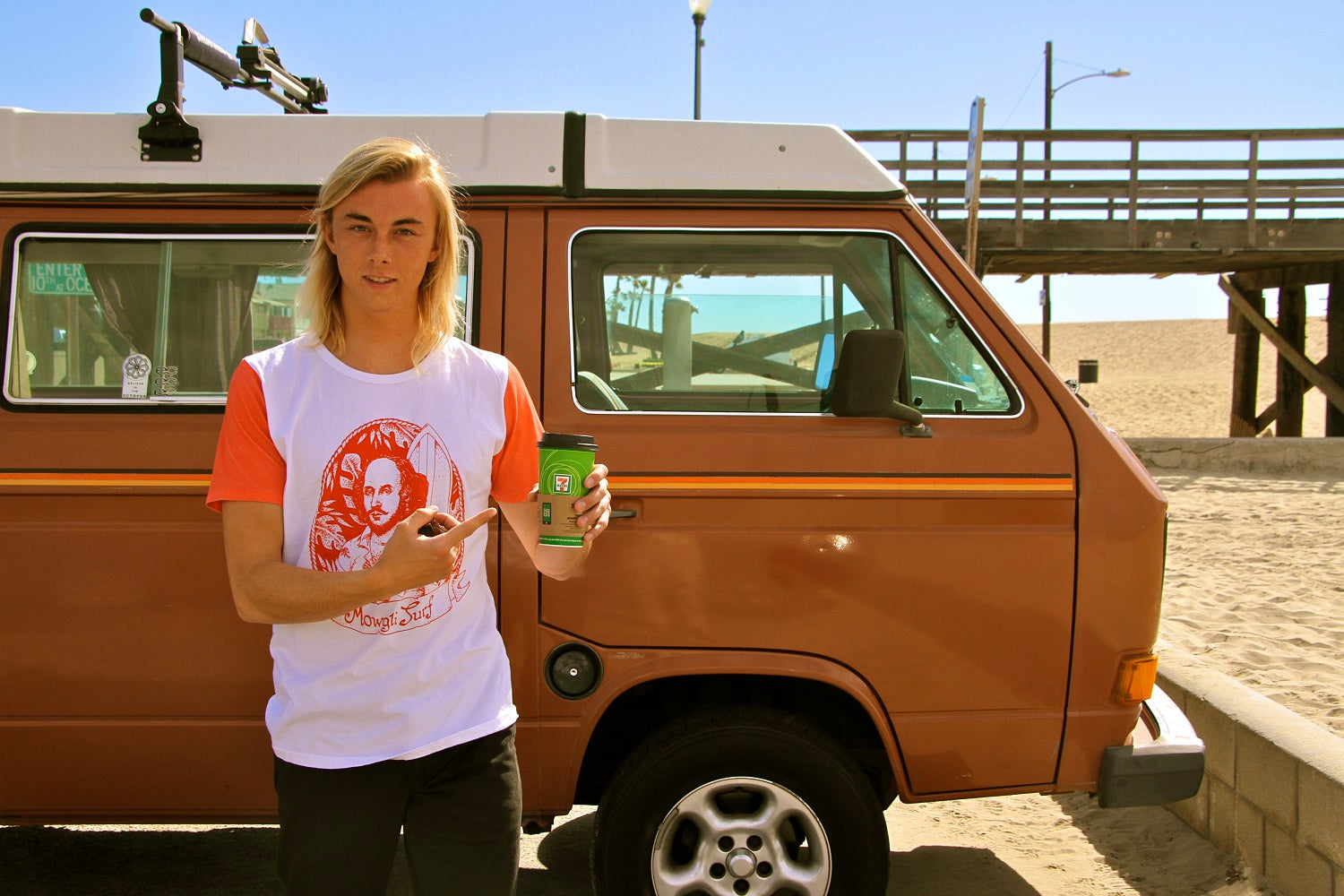


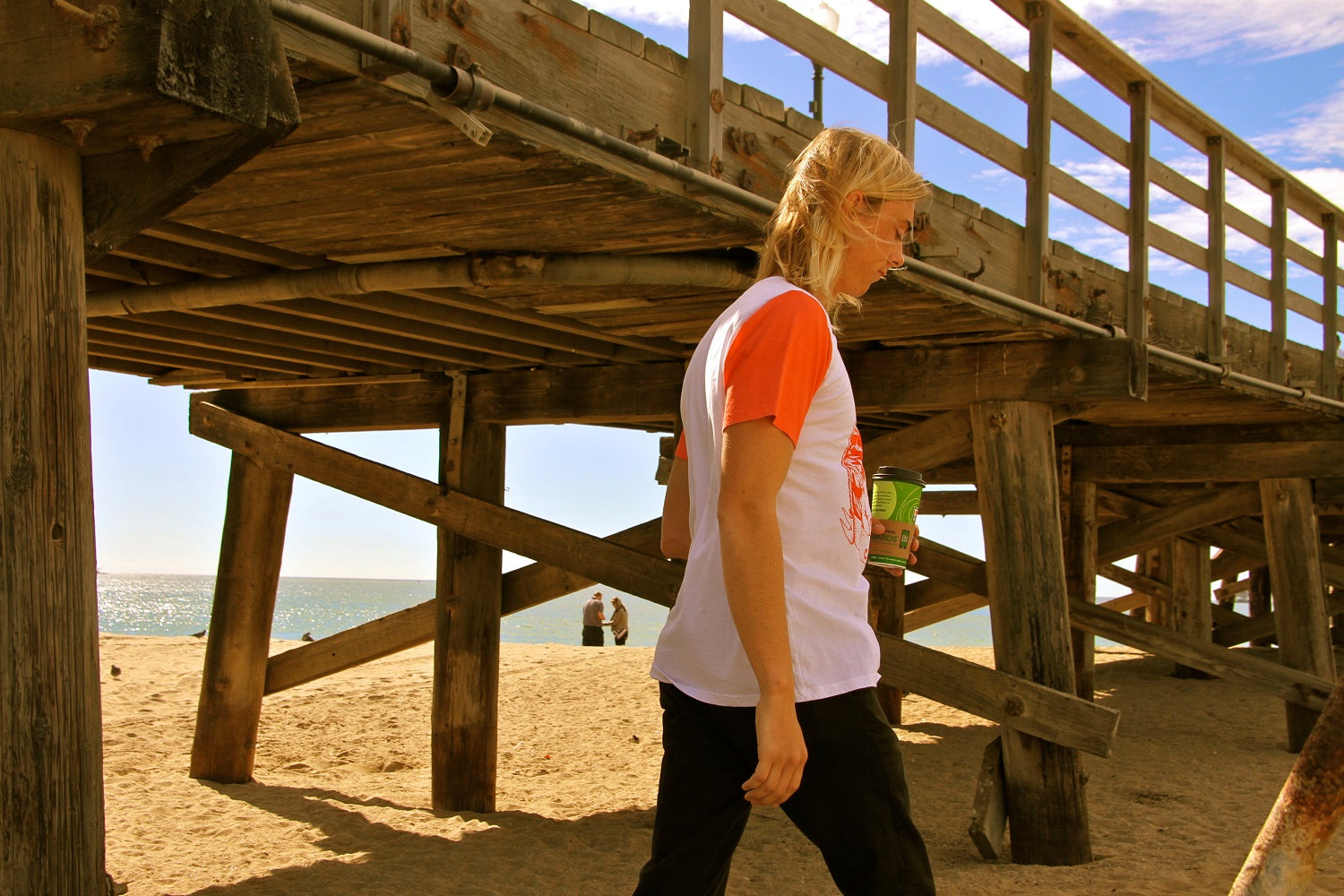
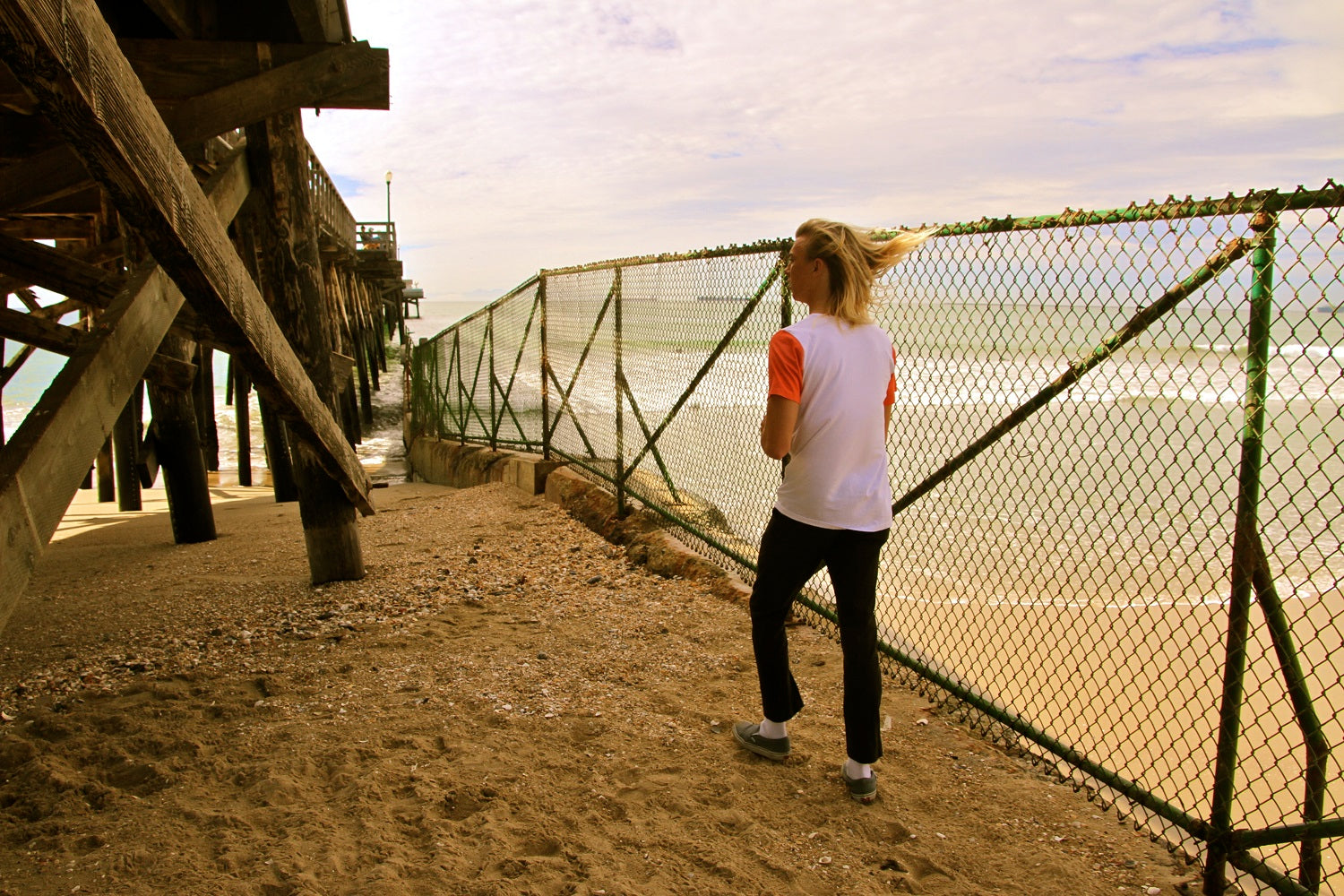


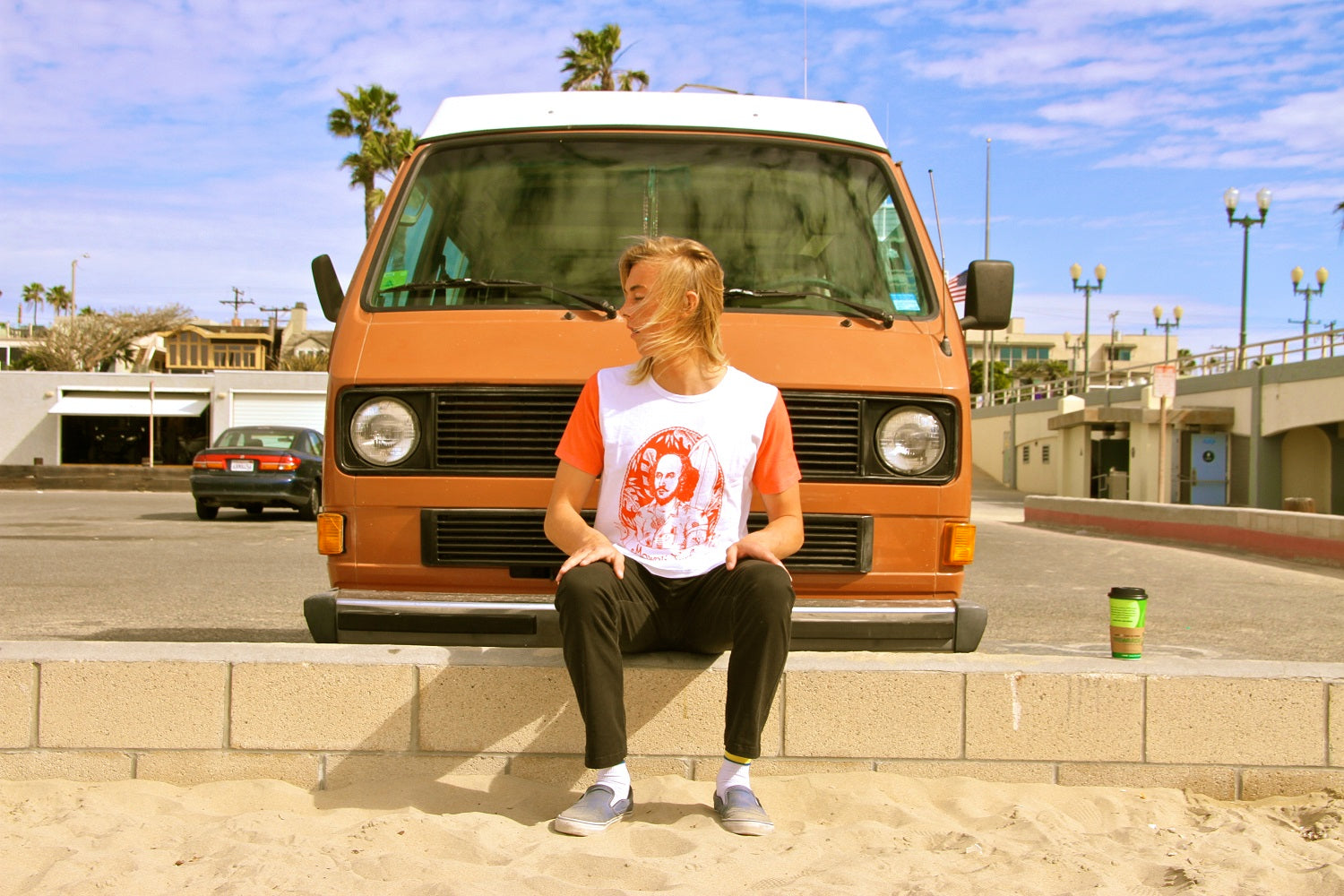


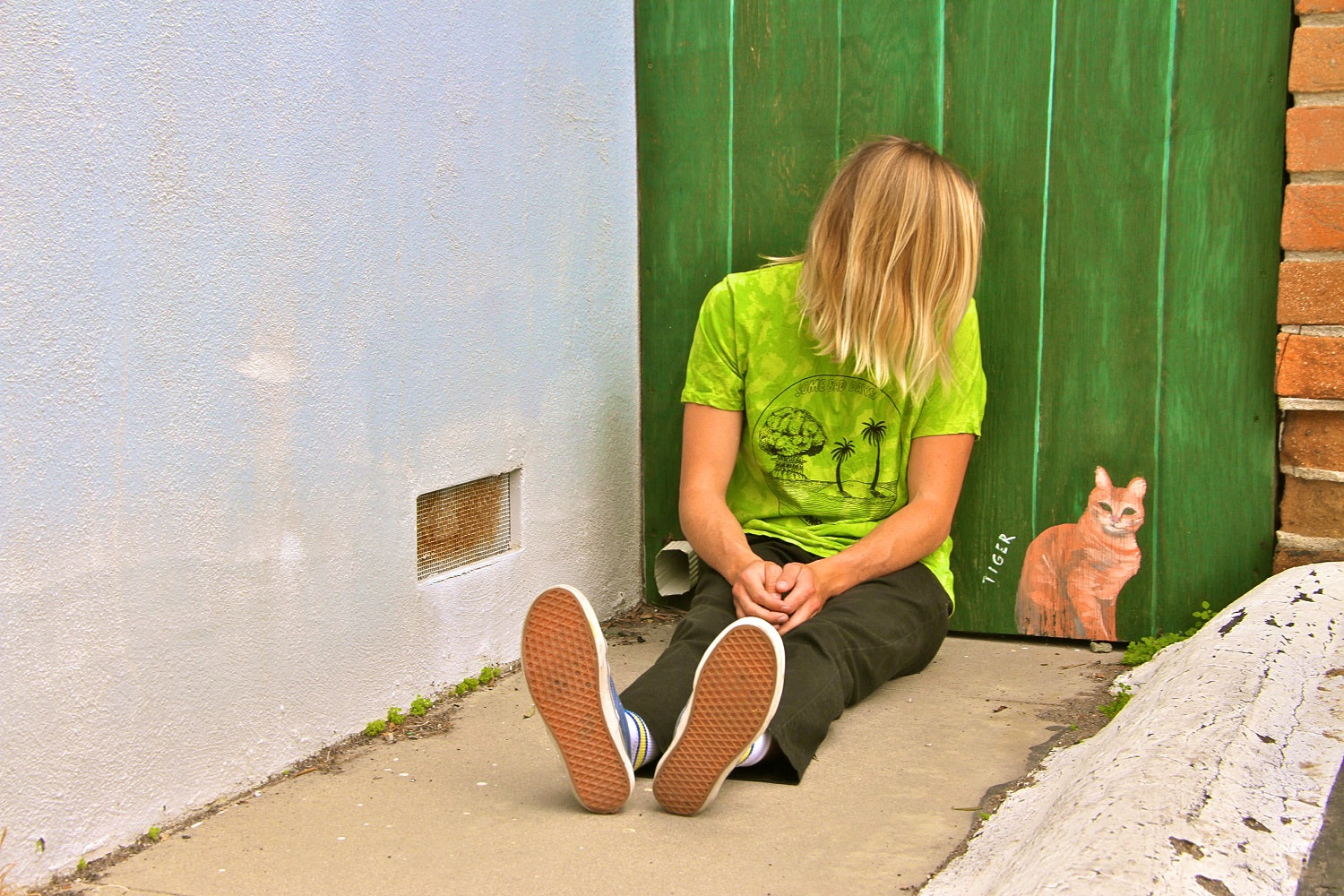


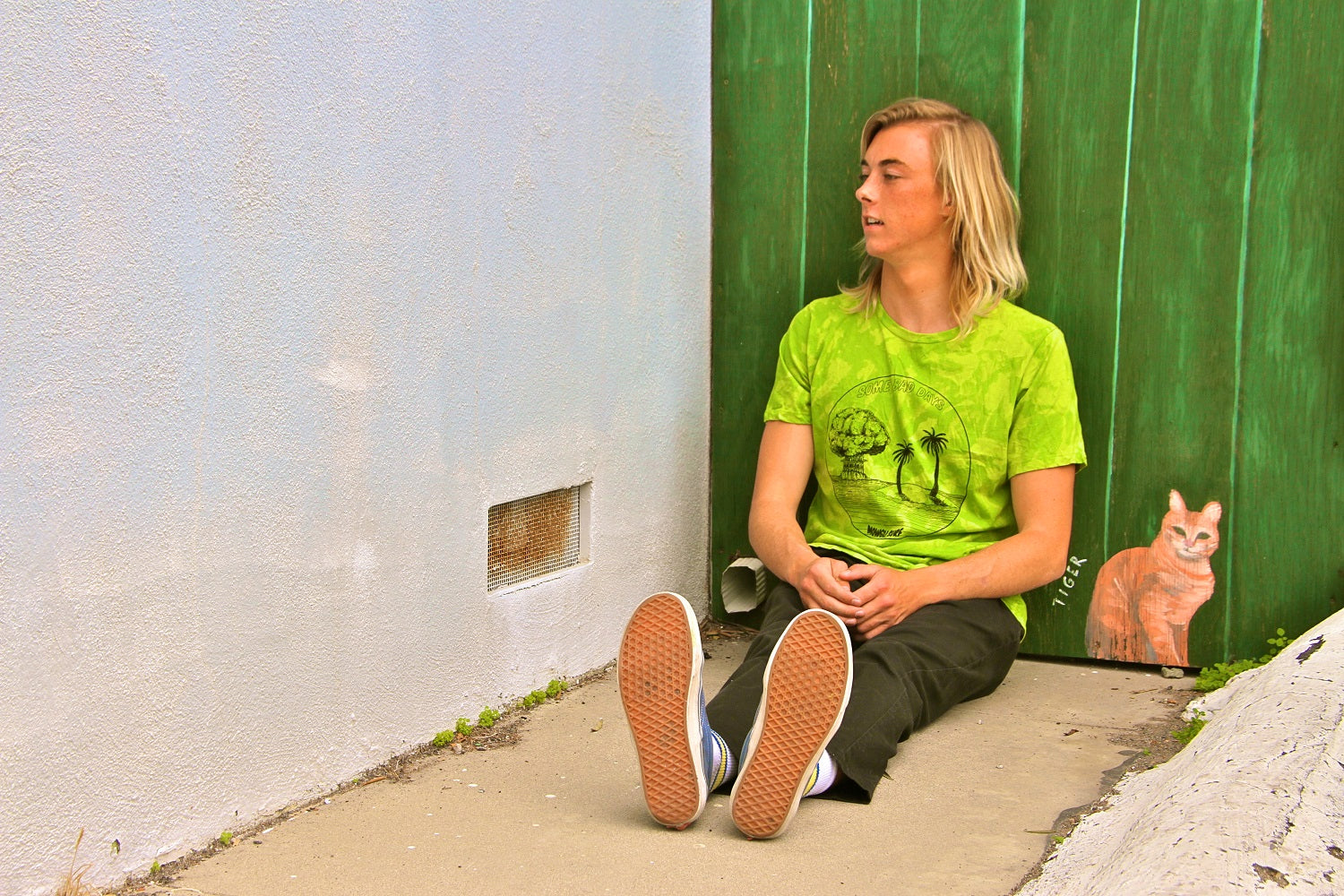 Photo Jessie Stopnik
Photo Jessie Stopnik

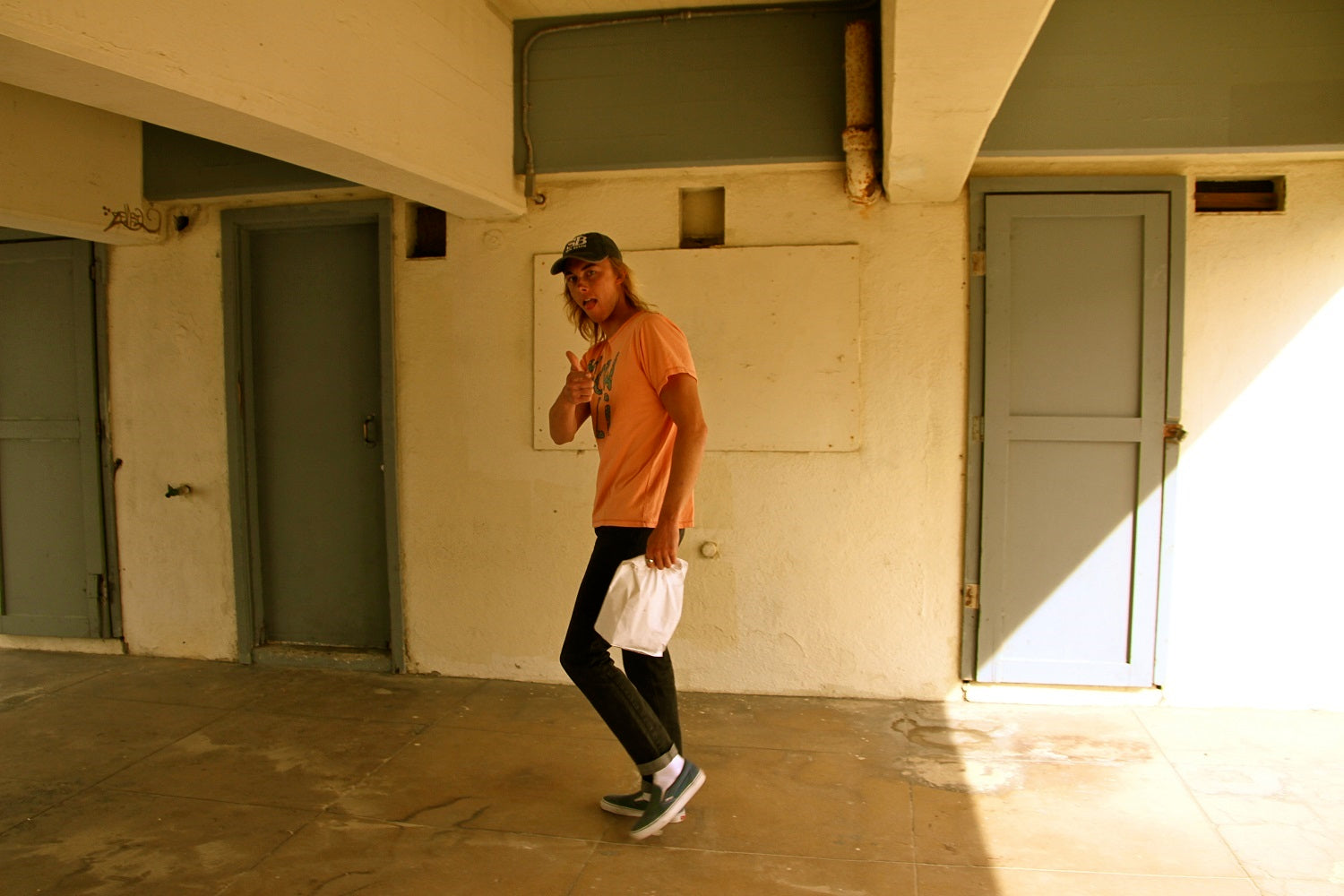

 Photos Jessie Stonpik
Photos Jessie Stonpik




 Photos Carson Hart
Photos Carson Hart





 Photos Thomas Green
Photos Thomas Green



 Photos Thomas Green
Photos Thomas Green




 Photos Thomas Green
Photos Thomas Green